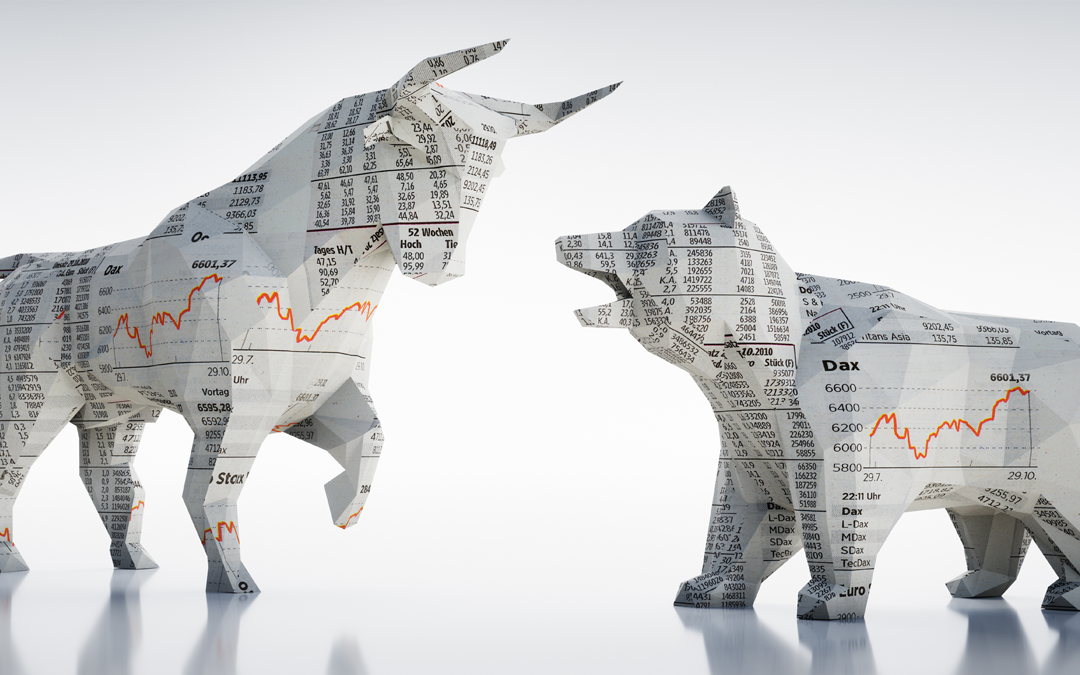DOES THE FEBRUARY 5TH DROP SIGNAL AN APPROACHING BEAR?
Market Corrections are not always bears
As everyone knows, stocks went into a dramatic spiral on Monday, February 5th, as the DJIA plummeted almost 1,600 points, which was the biggest point decline in history. But right before the market closed, buyers charged back into the market and limited the damage – but the DJIA still lost 1,175 points.
When it was over, the DJIA closed at 24,345, down 4.6%; the S&P 500 dropped 113 points, or 4.1%, to 2,648; and NASDAQ lost 273 points, or 3.78%, to 6,967.
The sell-off essentially wiped out the DJIA and S&P 500 gains for the year, and left the NASDAQ barely in positive territory for 2018.
Such a movement begs the question: does this decline signal an upcoming bear market? To answer that question, we should probably define a bear market first.
A BEAR MARKET
A “bear market” occurs when stock prices in general are falling, and then widespread pessimism sustains the continued drop in prices. The stock market officially becomes a bear market whenever stock prices have fallen over 20% over the course of several months.
A “bull market,” conversely, comes with rising stock prices and increasing investor confidence. Stock prices need to rise by at least 20%.
Looking at history, bear markets are typically shorter than bull markets. A bull market’s average duration is about 3 years, while bear markets last on average about 18 months.
The terms, “bear market” and “bull market,” come from the behaviors of these animals: A bull thrust its enemies upward, while a bear prefers to knock foes into the dirt.
STOCK MARKET CORRECTIONS
It is important to distinguish a bear market from a market correction, which is shorter and involves less of a market decline. Market corrections are part of the normal ebb and flow of the market. They are short-term trends that typically last less than two months and involve stock market declines of about 10% – not the 20% fall in a bear market. Stock market corrections are a natural part of the stock market cycle.
STOCK MARKET CRASHES
Stock markets “crash” when stock prices plummet more than 10% in a single day. The Great Crash of 1929 consisted of market drops of 13% and 12% on successive days.
BULL MARKET DECLINE
In a bull market, there will of course be days or weeks when prices decline. It is important, however, to distinguish a bull market decline from the beginning of a bear market. In a decline, the stock market posts losses for days or even weeks in a row. Investors might be tricked into thinking that a new bear market has begun. However, until stock prices decrease by 20%, there is not a bear market.
HISTORICAL BEAR MARKETS
Great Crash of 1929
(89% drop, 34 months)
The depression was preceded by the Great Crash of October, 1929, with price declines of 13% and 12% on successive days. The crash also inaugurated the worst bear market of all time, with stocks dropping 89% through June, 1932. High unemployment lasted through the 1930s.
Vietnam & Assassinations of 1968-1970
(36% drop, 18 months)
A weakening economy, high inflation, a tumultuous year of assassinations and riots, and tensions of the Vietnam War influenced the development of a bear market, which accompanied a mild recession.
Oil Embargo of 1973-1974
(48% drop, 21 months)
The 1970s were marked by chronically high inflation. Stocks also underperformed during the decade, rallying and then fading in value. In 1973, the Arab oil embargo drove up gas prices, sparking double-digit inflation, a recession, and a bear market.
Interest Rate Rise in 1980-1982
(28% drop, 21 months)
By 1980, the country had faced almost a decade of sustained inflation, along with slow growth. In order to fight this “stagflation,” the Federal Reserve raised interest rates. This rate increase, coupled with a deep recession, led to a relatively shallow bear market lasting 21 months.
Crash of 1987
(34% drop, 3 months)
Due in large part to the excesses of automated computer trading, the market crashed, falling 22.6% in one day. The resulting bear market lasted only a brief 3 months. U.S. GDP did not fall, so there was no recession.
Dot.com Bubble of 2000-2002
(49% drop, 30 months)
The Dot.com bubble consisted of soaring stock prices and excitement about newly emerging Internet companies. The bubble burst when investors realized that the newly emerging Internet companies showed little or no profit. The attacks of 9/11 deepened a mild recession and prolonged this bear market.
Subprime Mortgage & Financial Crisis of 2007-2009 (56% drop, 17 mo.)
A rising mortgage delinquency rate spilled over into the credit markets because a variety of financial instruments were tied to home loans. As a result,
the U.S. and other countries enacted large economic stimulus measures. It was accompanied by the “Great Recession.”
TRENDS AND PREDICTIONS
A bear market is difficult to predict. Falling stock values might just be part of a stock market correction. Rising values might only signal a bear market rally, as opposed to a new bull market.
Investors need to beware of the tendency to over-react to fears of a bear market or thrills of a bull market. Investors tend to tinker with their holdings, often selling after stocks have fallen sharply, instead of buying stocks at low prices (or investors are often tricked into buying after stocks have risen to unsustainable heights).

